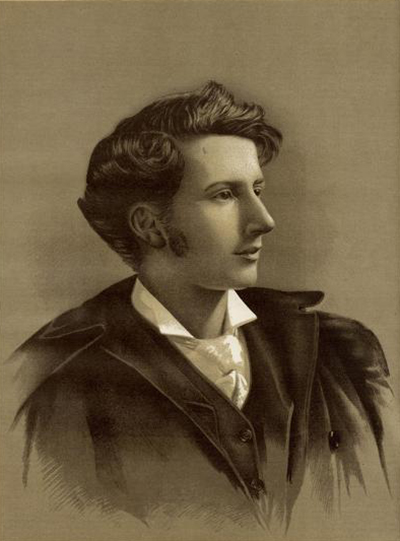Hamish MacCunn

Born: March 22, 1868, Greenock, Scotland
Died: August 2, 1916, London, England
The Land of the Mountain and the Flood, Op. 3
- Composed: 1868
- Premiere: November 5, 1887 at the Crystal Palace in London, conducted by Sir August Manns
- CSO Notable Performances: These are the CSO’s first performances of this work.
- Instrumentation: 2 flutes, 2 oboes, 2 clarinets, 2 bassoons, 2 horns, 2 trombones, bass trombone, tuba, timpani, cymbals, strings
- Duration: approx. 9 minutes
Hamish MacCunn, born James MacCunn in 1868 in Greenock, Scotland, a coastal town 20 miles west of Glasgow where his father was a prosperous shipowner, grew up in a musical family; his father was an amateur cellist and his mother a trained singer and pianist. In addition to his cultured home life, James was given an excellent general and musical education, including attending a season of concerts with his family at the Crystal Palace in London when he was eight. He began composing soon thereafter and in 1883, at 15, won a competitive scholarship to the newly established Royal College of Music (RCM) in London, where he studied piano, viola and composition and began to compose in earnest—his cantata The Moss Rose was performed at the RCM in 1884 and the overture Cior Mhor (“The Ship of the Fiend”) was included on a concert at the Crystal Palace a year later. Although he became immersed in the musical life of London, MacCunn continued to value his Scottish heritage, adopting the name Hamish (a Gaelic version of the birth name James), writing a series of overtures based on Scottish subjects, marrying the daughter of the famous Scottish painter John Pettie, and leaving the RCM in 1886 without a diploma when he thought he was not being accorded sufficient social status. Two years later, MacCunn was appointed to the composition faculty of the Royal Academy of Music, and, in 1889, he was commissioned by the Carl Rosa Company to write the opera Jeanie Deans, based on Walter Scott’s novel The Heart of Midlothian. The success of that piece encouraged him to compose another half-dozen musical theater works and to become involved with several British opera companies as a conductor, first with the Carl Rosa Company and, later, with the Savoy Theatre (Gilbert & Sullivan’s home base), Covent Garden and Shaftesbury Theatre, in repertory ranging from Offenbach to Wagner. In 1912, MacCunn joined the faculty of the Guildhall School of Music, and the remaining four years before his premature death, at age 48 from throat cancer, were devoted more to conducting and teaching than composing.
MacCunn was just 19 when the premiere of the overture The Land of the Mountain and the Flood at the Crystal Palace in 1887 established his reputation as a composer. A critic for The Musical Times commented, “The work—which is spirited and bold in conception and brilliantly scored—was finely played and enthusiastically received,” and George Bernard Shaw, working as a music critic during his first years in London, wrote that the piece is “a charming Scotch overture that carries you over the hills and far away.”
The Land of the Mountain and the Flood takes its title from the Sixth Canto of Sir Walter Scott’s poem "The Lay of the Last Minstrel," in which Scott has the titular bard respond to a challenge:
Breathes there the man, with soul so dead,
Who never to himself hath said,
This is my own, my native land!
Whose heart hath ne’er within him burn’d,
As home his footsteps he hath turn’d,
From wandering on a foreign strand!
–––
O Caledonia! stern and wild,
Meet nurse for a poetic child!
Land of brown heath and shaggy wood,
Land of the mountain and the flood,
Land of my sires! what mortal hand
Can e’er untie the filial band,
That knits me to thy rugged strand!
MacCunn, associating himself with both Scott and his ancient bard, created in The Land of the Mountain and the Flood a sonata-form piece with two splendid themes—the first modal and stern, the second lilting and lyrical—imbued with the style and spirit of Scotland’s traditional music.
—Dr. Richard E. Rodda